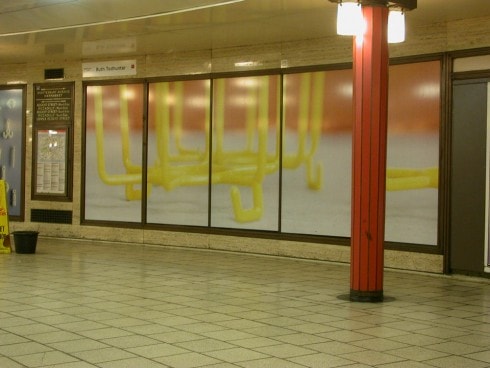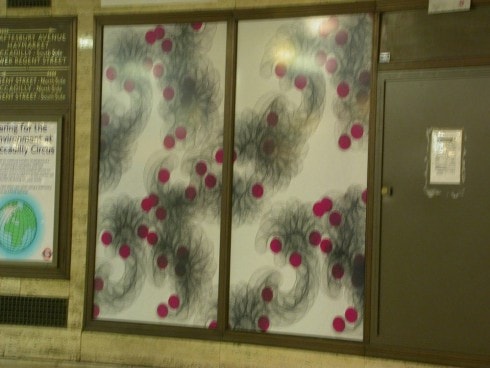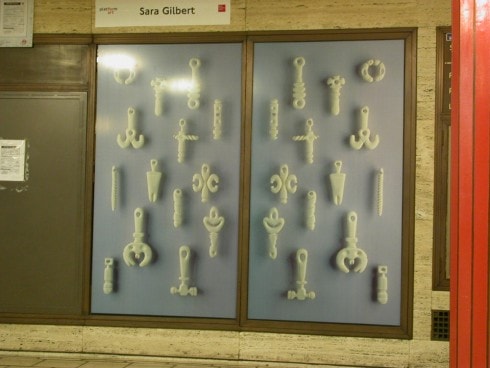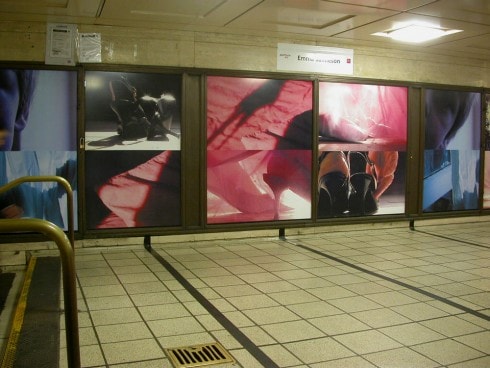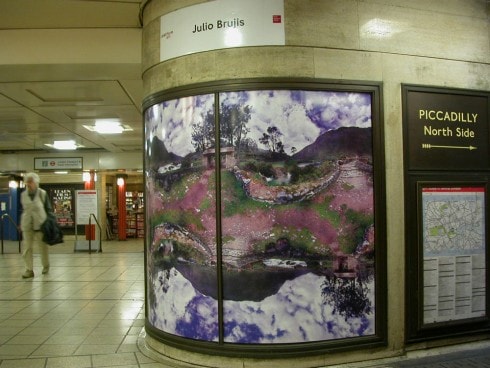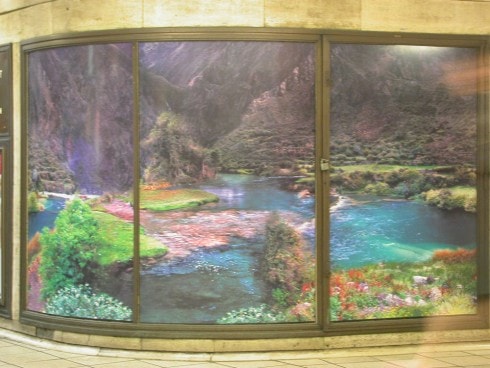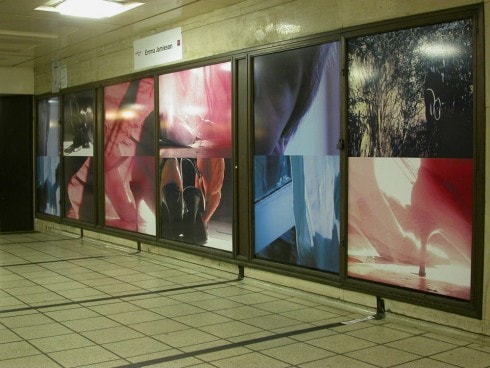London Underground’s Platform for Art programme is delighted to be working in collaboration with the Royal Academy Schools, an institution of enormous historical and contemporary significance. Graduating 5 is a showcase of five talented artists: Divyesh Bhanderi, Julio Brujis, Sara Gilbert, Emma Jamieson and Ruth Todhunter, who are graduating from the Royal Academy Schools this summer. The exhibition is an opportunity for the artists to show their work in a unique public environment and is testament to Platform for Art’s commitment to working with artists in the early stages of their career. It coincides with the Royal Academy Schools final show in June.
The Royal Academy Schools formed the foundation of the Royal Academy of Arts in 1768. Past students include JMW Turner, William Blake and, more recently, John Hoyland and Anthony Caro. Over three years of postgraduate study, students learn about a range of contemporary ideas and approaches, enabling them to develop their individual practice. The works presented at Piccadilly Circus station demonstrate the broad range of styles and techniques practised at the RA Schools.
Divyesh Bhanderi produces large-scale drawings through systems that use custom-made spirograph tools. Each drawing is a series of lines that are intricately woven to create patterns of abstract motifs. The technique is labour-intensive: each work takes up to two months to complete. Bhanderi’s aim is to make precise drawings in which his “artistic identity” becomes lost through the use of tools in a machine-like process. However, the minute accidental movements he makes and the variations of his pen pressure cause tiny flaws to occur as the ink is applied, making each work unique and personal. Two of Bhanderi’s most recent works have been reproduced for this exhibition.
Julio Brujis uses digital technology to manipulate photographic images. He is particularly interested in the illusionary nature of the historical representation of landscape. In his work he explores what is perceived as fiction, what as reality and how landscape is frequently represented as an idealised place. The works at Piccadilly Circus originate from a series of photographs that Brujis made in an isolated area of Peru. One image, Huancaya, is a view of a single place constructed from photographs taken in every direction from a fixed point. The second image, Yauyos, was composed from photographs of different places in the region resulting in the depiction of a new, fictional place.
Sara Gilbert’s collection of hand-carved objects incorporate motifs and details borrowed from tools, children’s toys and many other cultural and social symbols. The objects, presented as a group, like artefacts in an ethnographical display, all possess a family likeness. Their rounded edges and surfaces indicate that they belong together, yet their origin and purpose remains uncertain and they resist logical classification. Each object is a hybrid of multiple references; they could be props, icons or totems that belong to some sort of comic or absurd fantasy narrative. They are presented in Piccadilly Circus at one-to-one scale in the form of specially produced photographs.
Emma Jamieson has produced a story-board of stills from a video film work. The film focuses on small, evocative moments, fleetingly remembered fragments of a story, an event or a thought imbued with a sense of nostalgia. The images – a flicker of light through cloth, a glimpse of a shoe or momentary movement of water – could be the points between or within significant events, apparently inconsequential yet poignant snatches of memory that become the symbolic cues for particular scenarios, sights or sounds. The images are presented in the ticket hall at Piccadilly Circus, where Tube users might glance or stop for a longer perusal as they pass through.
Ruth Todhunter selects functional objects from the familiar realm of the domestic and the industrial to make abstract compositions about light, colour, texture and shape. In these works, made as photographs, video film, or installation, the objects lose their identity and function, becoming almost unrecognisable as an emphasis on form or colour takes priority. The approach to making the work is akin to that of painting; every element is carefully controlled, considered, reassessed and changed until the final composition is achieved. Minute alterations in lighting or angle make vast differences to the tone, hue or density of colour. For this exhibition one image has been blown up to extend across a number of panels. In the process, the panel frames have become part of the work, making it unique to this environment.
Graduating 5 coincides with the Royal Academy Schools Show
15 – 26 June 2005
Royal Academy Schools
Entrance via Burlington Gardens, London W1
